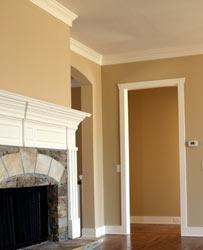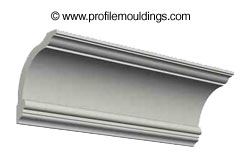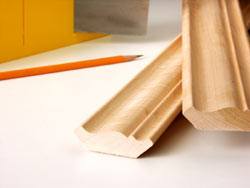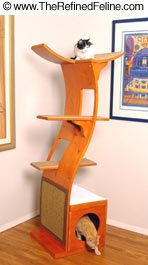
Most often, as we walk through the rooms of a house, we look straight ahead, or even down a bit. But the next time you're evaluating the look of your home, look up, and see what a difference some decoration at the top of the room could make.
We're talking here, of course, about crown moulding, that decorative detail that can make a room feel as if you're in a castle, even if you've just got 850 square feet to call your own.
Crown moulding is most often associated with gracious buildings of a bygone era; you'll see it in house tours of Victorian homes in particular, but the truly great homes of Europe, such as Versailles, also have plenty of decorative moulding to add to their elegance.
While you may not live the life of a French nobleman, you can make your home feel more elegant with the simple addition of crown moulding.

There are other types of decorative moulding. If you're interested in going into the design field, you should start familiarizing yourself with them, as they can be used in a variety of ways to add to a room's look. Chair rails are one popular type. These are horizontal mouldings that run along the length of the wall, about four feet from the floor. Originally, these were used in formal dining rooms to protect the walls from the chairbacks.
Baseboard moulding, or "skirting board, " is probably the most common type of moulding; it runs along the wall just above the floor, protecting the wall from furniture bumping against it. We're so used to skirting board that room without it will usually look cheaply and hastily built.
The moulding can be painted either the same color as the ceiling or wall, or in a contrasting color for even more of a "pow" effect. And just because it's old fashioned, moulding doesn't have to be staid or boring. Imagine a ceiling painted white, a deep red wall, and yellow crown moulding.

Even though crown moulding is often used in rooms with fairly high ceilings, using it in lower-ceilinged rooms in more modern buildings can work as well — just make sure the moulding isn't a full foot from the ceiling, but rather place it about four inches down.
If you do have luxurious, high ceilings, placing the moulding about a foot below the ceiling line draws the eye to the top of the room, and reminds the visitor of just how high those ceilings are. In general, the higher the ceiling, the further down the wall you can place the moulding.
Moulding is also used not just decoratively; you can use crown moulding for hanging pictures, by visiting the local hardware store and getting hangers that clip onto the moulding. A wire hangs from the clip down the wall, onto which you attach the picture, eliminating the need for damaging the wall with picture hooks.
Using moulding is one way to make even the plainest room more elegant. It's inexpensive, fairly easy to install, and can make your modern box of a room feel like Versailles. Well, maybe without the view of the formal gardens.
Resources
- Profilemouldings.com
- Profilemouldings.com







